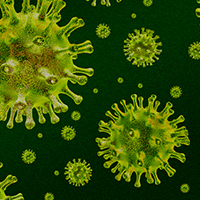Clinical and epidemiological profile of Indian COVID-19 patients from Jaipur: a descriptive study

All claims expressed in this article are solely those of the authors and do not necessarily represent those of their affiliated organizations, or those of the publisher, the editors and the reviewers. Any product that may be evaluated in this article or claim that may be made by its manufacturer is not guaranteed or endorsed by the publisher.
Authors
We analyzed the data of 102 confirmed patients with novel Coronavirus 2 infection (COVID-19) during the early period of nationwide lockdown announced in India after the declaration of pandemic. We analyzed epidemiological, clinical characteristics and outcome of hospitalization in 102 patients with positive results for novel corona virus (SARS-CoV-2) RNA testing which were traced on the basis of history of travel, contact with a confirmed COVID-19 case, resident of hotspot areas or presence of symptoms, thus providing an accurate estimate of the proportion of asymptomatic cases in the initial population. Of 102 patients enrolled in the study, 83.3% (85/102) were asymptomatic and 16.67% (17/102) were symptomatic. Seventy-seven (75.49%) were males and 24.50% (25/102) were females. Eighteen (17.6%) patients had associated comorbidities, the most prevalent of which were diabetes mellitus 10.8% (11/102), hypertension 7.8% (8/102), chronic obstructive pulmonary disease (COPD) in 3.92% (4/102), chronic kidney Disease (CKD) 0.98% (1/102), coronary artery Disease (CAD) 0.98% (1/102) and cerebro-vascular disease (CVD) 0.98% (1/102). The clinical spectrum among symptomatic COVID-19 patients varied from dry cough and fever to respiratory failure and multi-organ failure. Twelve (11.76%) patients were kept in intensive care unit (ICU). Ninety-nine (97.05%) patients recovered while three (2.94%) died during hospital stay. With majority of COVID-19 cases in India being asymptomatic, changes in biochemical and inflammatory profile were small and insignificant in asymptomatic patients when compared to symptomatic patients. Elevated NLR, lymphopenia, age and presence of comorbidities were associated with increased severity and poor outcome.
How to Cite

This work is licensed under a Creative Commons Attribution-NonCommercial 4.0 International License.







